When we were first sketching out where we wanted to go on this trip, there were two things I specifically wanted to see in sub-Saharan Africa: the great migration and the mountain gorillas (Peter’s list was similar and included the great migration and chimpanzees). If you’ve ever seen a gorilla in a zoo, you saw a lowland gorilla because mountain gorillas die in captivity; therefore, the only way to see them is to hike to them in the wild. There are less than 1,000 mountain gorillas left in the world, and they only live in Rwanda, Uganda and the Democratic Republic of Congo. Because the DRC is relatively unsafe and Rwanda had doubled their gorilla permit fee a few months prior to our arrival in Africa, we picked Uganda for our chimp and gorilla escapades. As you may know, Sigourney Weaver helped make the mountain gorillas well known by her portrayal of Dian Fossey in Gorillas in the Mist, which we watched again before we got to Uganda for the fun of it.
Not surprisingly, the chimps don’t live with the gorillas so we had a full day’s drive between Kibale National Park and the Bwindi Impenetrable Forest, home of the gorillas of Uganda. On the way to and from Kibale, we found ourselves in a green sea of tea plantations. Unless I’m somewhere I cannot resist the coffee (like Italy), I’m generally a black tea drinker and a tea plantation tour was also something we wanted to do somewhere in the world, so we decided, why not here?
 A man cutting tea leaves with shears attached to a square plastic bucket
A man cutting tea leaves with shears attached to a square plastic bucket
I’m not really sure what we expected, but the tea plantations surprised us in their beauty. The tea grows on bushes that can be many decades old because only the new growth at the top is cut and made into tea. Because of this, the bushes grow together and form a flat, brilliant green carpet that covers the rolling hills on which they are grown. They were gorgeous. We toured a local co-op that processed the tea for the area’s member farmers. When we were there, the machines weren’t working because the power was out, so we were able to get really close to everything. Generally, at least in Uganda for their black tea, the tea leaves are picked, left to wilt a little, fermented (technically oxidized, which seems to us to be just dried longer), and then heated to stop the fermentation process. At some point in the oxidation process the tea leaves are crushed/bent/torn, and at the end they are sorted into different size cut leaves, the smallest being the strongest and destined for tea bags; the largest being the most flavorful and destined for loose tea. We got to taste the different sortings of tea and both preferred the biggest leaves as they were the least bitter and most flavorful, as promised.
 Peter and our guide in the tea processing plant.
Peter and our guide in the tea processing plant.
After seeing the internal operation, we went through the field itself and experienced something we’ll never forget. There were men working in the fields, none of whom spoke English, so our guide had to play translator. We came upon a group of men who seemed to be on a bit of a break, and were all staring at us with a look of amazement mixed with confusion on their faces. They had a conversation with our guide and ended up with big smiles and laughs. We weren’t sure at this point whether they were laughing at us or with us, so we had very hesitant smiles on our faces. Our guide told us they were so excited to see white people (and from America!) that they — young to middle-aged men — were laughing about it, they just couldn’t believe it. They only knew America from TV. Our guide explained to us that to these workers, America was this land where everyone was rich and where the roads are lined with gold. We tried to correct them on that. Then one of the men meekly asked our guide a question, which was: could he shake Peter’s hand? Of course! So Peter reached his hand out to him, and he shook it and looked into the eyes of the only white man he’d ever touched. Peter looked quite uncomfortable with this new found attention, but tried hard to be a sport and so we did the rounds of shaking their hands and took some pictures, which everyone was very excited to see on the back of our camera. The whole thing was a bit moving, and it was one of the times on this trip that we were reminded of just how very privileged we are compared to so many in the world. These men were wearing probably the only set of clothing they owned, working hard in fields for almost nothing, and that is what they were going to do for the rest of their lives. The guide even told them at our bequest, “hey they are just like you and me!” but we weren’t sure they believed him. For us, it was an honor to meet them.
On to the gorillas we rode with our driver and friend, Xavier. We stayed overnight at a lodge that faced the forest, and we could see from there that the Bwindi Impenetrable Forest was very aptly named. The next morning, we went through a drill similar to the chimps where we were assigned a group who then trekked to see a family of habituated gorillas. This is where the similarity to the chimp experience ended. While the chimps were an easy 20-minute mostly flat walk into the woods, the gorillas were a 2 ½ hour proper hike away from where Xavier dropped us off. The good thing for us was that they were not too far off a trail that day, so the hike wasn’t too hard, but there were several hills to climb and descend, it was hot, and there were some in our group who clearly didn’t hike very often. But we all made it, some with the help of porters (who will even carry you on a stretcher, both ways, if you’re unable to hike), and were rewarded with about an hour of gorilla viewing.
 The hike in; Peter is in the white shirt and khaki hat
The hike in; Peter is in the white shirt and khaki hat
 A male gorilla eating, which they need to do a lot of each day.
A male gorilla eating, which they need to do a lot of each day.
 Male gorilla with his hand on his head, contemplating either us, or which leaf to eat next.
Male gorilla with his hand on his head, contemplating either us, or which leaf to eat next.
The gorillas are bigger than we imagined. Big and powerful and yet very graceful — the kind of grace that comes with power. We can’t imagine how anyone could hunt these incredible animals (for “bush meat” and trophies), but that is one reason there are so few left today. The gorillas differed from the chimps in that, unlike in Kibale (and the movie), they were not in a nice clearing where we could see several of them at once. While the very active and loud chimps were in a forest that didn’t have a lot of undergrowth and were easy to see and photograph, most of the gorillas were solitary and eating quietly, and therefore not very active. They were also sitting in the middle of the very dense vegetation that they were in fact eating, so although the rangers and spotters used their machetes to cut away the forest cover to allow us to see as much as possible, it wasn’t like we had a clear view of an entire gorilla unless one was moving near us and we happened to see him go by. The eating gorilla would also get tired of us staring and pointing our cameras at him after about 10 minutes and move off elsewhere, at times in a clearly exasperated huff, which made the rangers laugh because they know each of these gorillas very well. There was one exception to this behavior, however, and it involved one of the big male silverbacks. We came around a corner and he was upright on all fours about 30 feet from us, looking generally our way, when he suddenly charged and ran right by us. Let me tell you gorillas can move, they have very long arms, and are shockingly strong. On his way by us he pulled down a long, 6” thick branch from a tree as if it were a cobweb. Very exciting! Peter had his wits about him and was able to get most of it on video below.
We hiked out the same 2 ½ hours we had come in and ultimately went back to our lodge to contemplate having looked into the eyes of yet another one of our close genetic relatives. On our way out, we saw what was one of my very favorite animals in all of Africa, the incredible, three-horned chameleon. We ended up seeing several chameleons in the next country we visited, but this one was the most fantastic.
 Chameleon eyes move independently of each other, and it was so much fun to watch them look around. We easily could have watched these guys for hours.
Chameleon eyes move independently of each other, and it was so much fun to watch them look around. We easily could have watched these guys for hours.
After the gorillas and chameleons, we went back to Kampala for a few days and just took in the city and some of the local sights, traveling on the back of “boda bodas,” i.e., motorcycle taxis with long seats. I was told paper beads were invented in Uganda, so I took a fun bead making class and made myself a bracelet. We also wandered through a huge market where the primary item for sale was clothing of all kinds. It came in in huge plastic woven bags and people were just digging through the bags. I had read you could find some designer clothes there for peanuts, and it seemed like most of the clothes were coming from outlets or overstock. We were the only tourists there. It was definitely a scene, and the kind of scene where you leave your camera securely in your bag… The one thing we saw but didn’t really see was the headwaters of the Nile, Lake Victoria. We saw the lake itself, but had spent enough time in a vehicle at that point, so decided to pass on driving over to see the actual headwaters. Next time!


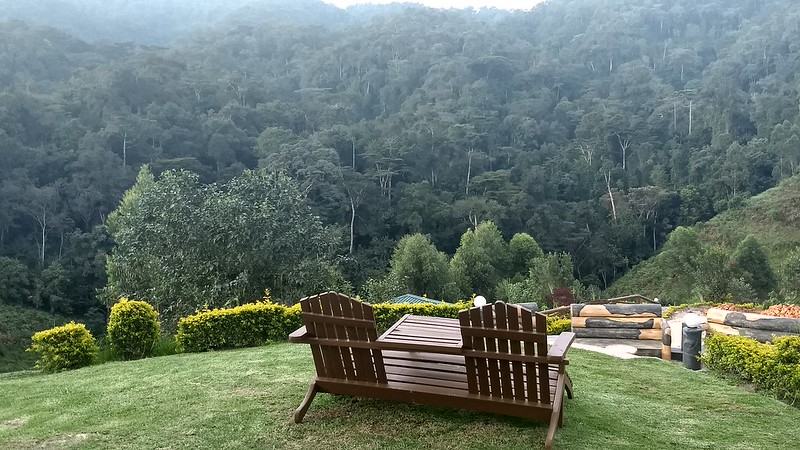








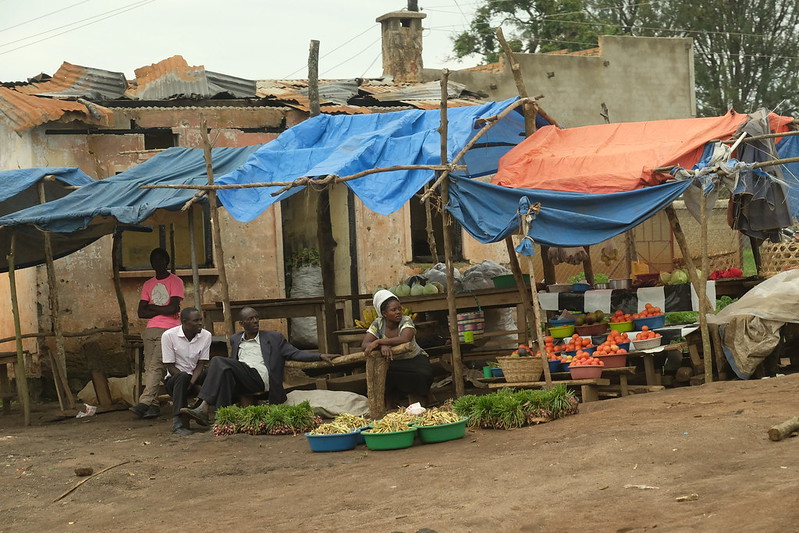
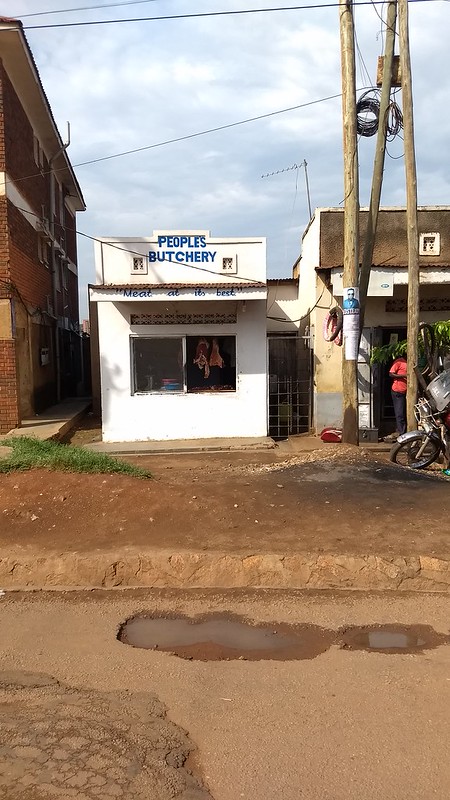












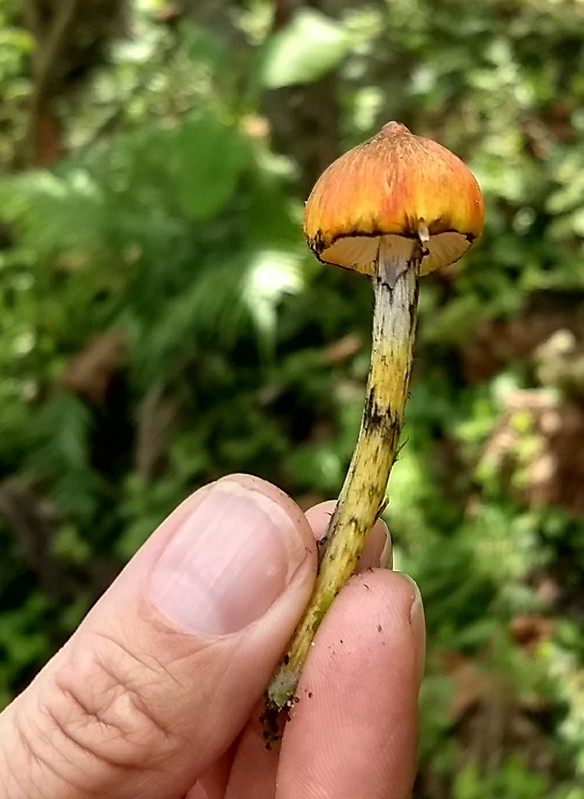



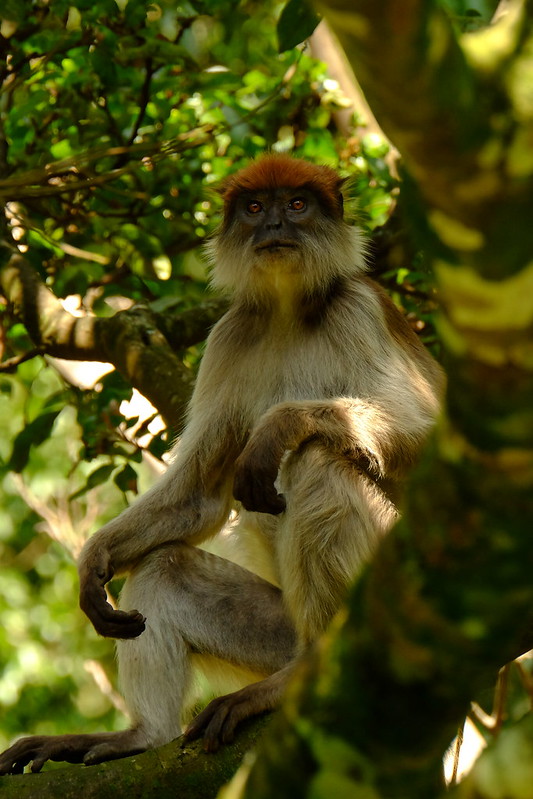





8 replies